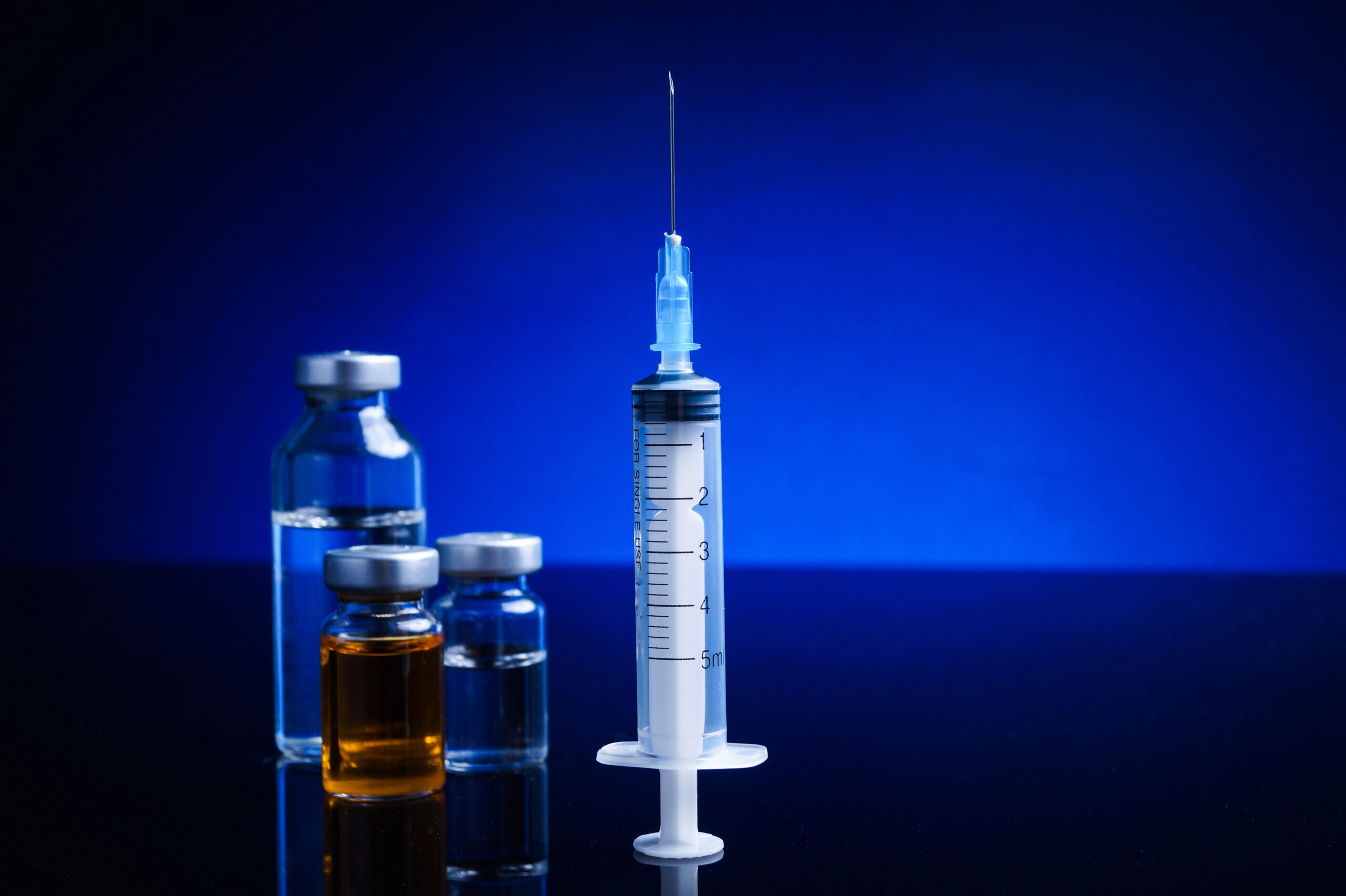Imagine a world where deadly diseases are a thing of the past, where children grow up without the fear of polio, measles, or whooping cough. Vaccines have brought us closer to this reality than ever before.
They are one of the most significant medical advancements in history, saving millions of lives each year.
The development of vaccines has not only reduced mortality rates but also enhanced the quality of life for countless individuals across the globe.
Understanding how vaccines work not only empowers us to make informed health decisions but also helps us appreciate the remarkable science behind these life-saving tools.
In this article, we will delve into the fascinating world of vaccines, exploring their mechanisms, benefits, and future prospects, offering a comprehensive understanding of their role in modern medicine.
Vaccines represent hope, progress, and the incredible ability of science to protect and preserve human life.
What Are Vaccines?
Vaccines are biological preparations that provide immunity to specific infectious diseases.
They work by mimicking the infectious agents that cause diseases, prompting the immune system to develop a defense against them without causing the actual disease.
The concept of vaccination dates back to the late 18th century when Edward Jenner discovered that exposure to cowpox could protect against smallpox.
This groundbreaking discovery laid the foundation for modern immunology.
Since then, vaccines have evolved and diversified, becoming crucial in preventing a wide range of diseases.
Today, vaccines are meticulously developed using advanced technologies to target various pathogens effectively, ensuring public health and safety.
Vaccines come in various forms, each designed to stimulate the immune system in a different way.
Live-attenuated vaccines, for example, use a weakened form of the virus or bacteria, which is strong enough to create an immune response but not potent enough to cause the disease in healthy individuals.
Inactivated vaccines use pathogens that have been killed or inactivated, making them safer for people with weakened immune systems.
Subunit, recombinant, polysaccharide, and conjugate vaccines use specific pieces of the pathogen—like its protein, sugar, or capsid—to stimulate an immune response.
These types of vaccines can provide immunity to the disease without using the whole germ. mRNA vaccines, the newest type, use messenger RNA to instruct cells to produce a protein that triggers an immune response, a method that has proven highly effective and can be developed rapidly, as seen with COVID-19 vaccines.
The Science Behind Vaccines
Vaccines stimulate the immune system by introducing antigens, which are parts of pathogens like bacteria or viruses.
These antigens are recognized as foreign by the immune system, which then produces antibodies to fight them.
There are several types of vaccines, including live-attenuated vaccines (which use a weakened form of the pathogen), inactivated vaccines (which use a killed version of the pathogen), subunit vaccines (which use parts of the pathogen), and mRNA vaccines (which use genetic material to instruct cells to produce antigens).
Each type has its own mechanism and advantages, but all aim to train the immune system to recognize and combat the real pathogen if encountered in the future.
The development and refinement of these different vaccine types represent a significant achievement in biomedical science, continually improving their efficacy and safety.
When a vaccine is administered, the immune system responds by producing antibodies, which are proteins that specifically target the antigens presented by the vaccine.
This process also involves the activation of T-cells, which help in identifying and destroying infected cells.
The body retains a memory of the antigen, so if the actual pathogen is encountered later, the immune system can respond more rapidly and effectively.
This memory response is the key to long-lasting immunity.
Additionally, vaccines can induce herd immunity, where a large portion of the community becomes immune to a disease, reducing its spread and protecting those who cannot be vaccinated.
Understanding these mechanisms is crucial for appreciating the complex and sophisticated nature of vaccines.
How Vaccines Protect Individuals
Vaccines build immunity by exposing the immune system to antigens without causing disease.
When the vaccinated individual encounters the actual pathogen later, their immune system quickly recognizes and destroys it, preventing illness.
For example, the measles vaccine contains a live-attenuated virus that stimulates the immune system to produce antibodies without causing measles.
Similarly, the tetanus vaccine uses an inactivated toxin to generate immunity against the tetanus bacteria.
By familiarizing the immune system with these pathogens, vaccines provide a critical defense against infectious diseases.
This preemptive approach to disease prevention is fundamental to maintaining public health, significantly reducing the incidence of many once-common illnesses.
The immune system's ability to recognize and respond to pathogens is enhanced by vaccination.
When a person is vaccinated, their immune system is essentially given a blueprint for fighting a particular pathogen.
This blueprint includes the production of specific antibodies that can neutralize the pathogen and the activation of T-cells that can kill infected cells.
The immune system's memory cells remember this blueprint for years, sometimes for a lifetime, providing long-term protection.
This is why vaccines are so effective at preventing diseases; they prepare the body to fight off infections before they can cause significant harm.
Furthermore, the widespread use of vaccines has led to the eradication or near-eradication of diseases such as smallpox and polio, demonstrating their unparalleled effectiveness.

Herd Immunity and Community Protection
Herd immunity occurs when a significant portion of a population becomes immune to a disease, making its spread unlikely.
This protects individuals who cannot be vaccinated, such as those with compromised immune systems or allergies to vaccine components.
High vaccination rates are essential for achieving herd immunity, as they reduce the overall presence of the disease-causing pathogen in the community.
This collective immunity has been instrumental in controlling and even eradicating diseases like smallpox and polio, showcasing the profound impact of widespread vaccination.
The concept of herd immunity underscores the importance of community-wide vaccination efforts, emphasizing the role of individual responsibility in public health.
Achieving herd immunity relies on the principle that if enough people are immune to a disease, either through vaccination or previous infection, its spread will be minimized.
This collective immunity is crucial for protecting vulnerable populations who cannot receive vaccines due to medical reasons.
For instance, infants, pregnant women, and individuals with certain medical conditions rely on herd immunity to avoid exposure to contagious diseases.
In the case of highly contagious diseases like measles, a very high percentage of the population—up to 95%—needs to be vaccinated to maintain herd immunity.
This high threshold illustrates the importance of widespread vaccination coverage.
By participating in vaccination programs, individuals contribute to the overall health of their communities, preventing outbreaks and saving lives.
Vaccine Development and Safety
Vaccine development is a rigorous process that includes extensive research, clinical trials, and regulatory approval to ensure safety and efficacy.
It typically involves several phases, starting with laboratory research and animal testing, followed by multiple phases of human clinical trials.
Each phase aims to evaluate the vaccine's safety, dosage, and effectiveness.
Regulatory bodies like the FDA (Food and Drug Administration) or WHO (World Health Organization) review the trial data before approving a vaccine for public use.
Continuous monitoring for adverse effects ensures that vaccines remain safe throughout their use.
Common concerns about vaccine safety, such as fears of severe side effects, are addressed through transparent communication and robust safety systems.
This comprehensive development and monitoring process is designed to maintain public trust and ensure that vaccines provide maximum benefit with minimal risk.
The development of a vaccine begins with basic research, often involving years of study to identify suitable antigens that can stimulate an immune response.
Once a potential vaccine candidate is identified, preclinical testing in laboratory animals assesses its safety and ability to provoke an immune response.
Successful candidates then move into human clinical trials, which occur in three phases.
Phase I trials involve a small group of healthy volunteers to evaluate safety and dosage.
The second phase trials expand the participant pool to include people at risk for the disease, further assessing safety and immune response.
Phase III trials involve thousands of participants to confirm effectiveness and identify any rare side effects.
After these trials, regulatory agencies thoroughly review the data before granting approval.
Post-marketing surveillance continues to monitor vaccine safety and effectiveness, ensuring ongoing protection for the public.
The Impact of Vaccination Programs
Vaccination programs have had a transformative impact on global health.
The eradication of smallpox is a monumental achievement, showcasing the power of vaccines.
Polio, once a widespread and crippling disease, is now on the brink of eradication.
Measles, rubella, and tetanus have seen significant declines in incidence due to vaccination efforts.
These success stories highlight the critical role of vaccines in reducing disease burden, preventing outbreaks, and saving lives.
Current vaccination efforts continue to target diseases like influenza, HPV, and COVID-19, demonstrating the ongoing relevance and importance of vaccines in public health.
The success of vaccination programs underscores their essential role in achieving and maintaining public health milestones.
The eradication of smallpox, declared in 1980, is a testament to the effectiveness of global vaccination efforts.
This achievement was the result of a coordinated international campaign that involved widespread immunization and meticulous surveillance.
Similarly, polio has been eliminated from most parts of the world, with only a few countries still reporting cases.
This progress is due to intensive vaccination programs that have reached millions of children.
The introduction of the HPV vaccine has significantly reduced the incidence of cervical cancer, while the annual flu vaccine helps mitigate the impact of seasonal influenza.
The rapid development and deployment of COVID-19 vaccines have been crucial in controlling the pandemic, saving countless lives and allowing societies to begin returning to normalcy.
These examples illustrate the profound and ongoing impact of vaccines on global health.

Challenges and Future Directions
Despite their success, vaccination programs face several challenges.
Vaccine hesitancy, driven by misinformation and fear, threatens to undermine immunization efforts.
Equitable access to vaccines remains a significant issue, particularly in low-income countries.
Innovations in vaccine technology, such as the development of mRNA vaccines, offer promising solutions to these challenges.
mRNA vaccines, like those developed for COVID-19, have shown high efficacy and rapid development timelines.
Future research aims to improve vaccine storage, distribution, and acceptance, ensuring that vaccines reach all who need them.
Addressing these challenges requires global cooperation, public education, and continued scientific innovation to ensure the benefits of vaccines are accessible to everyone.
Conclusion
Vaccines are a cornerstone of modern medicine, offering protection against a myriad of infectious diseases and contributing to global health and well-being.
By understanding how vaccines work and their profound benefits, we can appreciate the science that saves lives every day.
Thank you for reading! We encourage you to save our site in your bookmarks and share it if you found this information helpful.
Don't forget to check out our Health section here on Woman Vitality for more articles just like this one.
By staying informed and supporting vaccination efforts, we can continue to protect ourselves and our communities from preventable diseases.
References
History of Smallpox | Smallpox | CDC. (n.d.). https://www.cdc.gov/smallpox/history/history.html
World Health Organization: WHO. (2020, December 8). How do vaccines work? https://www.who.int/news-room/feature-stories/detail/how-do-vaccines-work?
National Academies Press (US). (1997). Immune response to vaccine antigens. Vaccine Safety Forum - NCBI Bookshelf. https://www.ncbi.nlm.nih.gov/books/NBK233000/
How Vaccines are Developed and Approved for Use | CDC. (n.d.). https://www.cdc.gov/vaccines/basics/test-approve.html

Leave A Comment